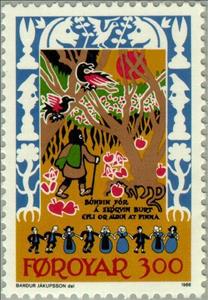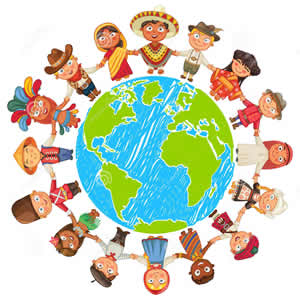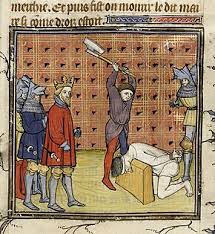Stamp: Peasant in Woods (Faroe Islands 1986)
Peasant in Woods (Faroe Islands 1986)
03 February (Faroe Islands ) within release Medieval ballads goes into circulation Stamp Peasant in Woods face value 300 Faroese oyra
| Stamp Peasant in Woods in catalogues | |
|---|---|
| Michel: | Mi:FO 130 |
Stamp is square format.
Also in the issue Medieval ballads:
- Stamp - Peasant in Woods face value 300;
- Stamp - Peasant Meets Giant face value 420;
- Stamp - Giant loses game face value 550;
- Stamp - Giant grants Peasant's wish face value 650;
|
Data entry completed
50%
|
|
|---|---|
| Stamp Peasant in Woods in digits | |
| Country: | Faroe Islands |
| Date: | 1986-02-03 |
| Perforation: | 12½ x 12¾ |
| Emission: | Commemorative |
| Format: | Stamp |
| Face Value: | 300 Faroese oyra |
Stamp Peasant in Woods it reflects the thematic directions:
Music is an art form and cultural activity whose medium is sound organized in time. The common elements of music are pitch (which governs melody and harmony), rhythm (and its associated concepts tempo, meter, and articulation), dynamics (loudness and softness), and the sonic qualities of timbre and texture (which are sometimes termed the "color" of a musical sound). Different styles or types of music may emphasize, de-emphasize or omit some of these elements. Music is performed with a vast range of instruments and vocal techniques ranging from singing to rapping; there are solely instrumental pieces, solely vocal pieces (such as songs without instrumental accompaniment) and pieces that combine singing and instruments. The word derives from Greek μουσική (mousike; "art of the Muses"). In its most general form, the activities describing music as an art form or cultural activity include the creation of works of music (songs, tunes, symphonies, and so on), the criticism of music, the study of the history of music, and the aesthetic examination of music. Ancient Greek and Indian philosophers defined music as tones ordered horizontally as melodies and vertically as harmonies. Common sayings such as "the harmony of the spheres" and "it is music to my ears" point to the notion that music is often ordered and pleasant to listen to.
A culture is a way of life of a group of people--the behaviors, beliefs, values, and symbols that they accept, generally without thinking about them, and that are passed along by communication and imitation from one generation to the next. Culture is symbolic communication. --the behaviors, beliefs, values, and symbols that they accept, generally without thinking about them, and that are passed along by communication and imitation from one generation to the next. Culture is symbolic communication.
In the history of Europe, the Middle Ages or medieval period (also spelt mediaeval or mediæval) lasted approximately from 500 AD to 1500, although some prefer other start and end dates. The Middle Ages is the second of the three traditional divisions of Western history: antiquity, medieval, and modern. Major developments include the predominance of agriculture in the economy, the exploitation of the peasantry, slow interregional communication, the importance of personal relationships in power structures, and the weakness of state administration. The period is sometimes subdivided into the Early, High, and Late Middle Ages, and the early medieval period is alternatively referred to as the Dark Ages.



